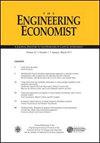Optimization-based tail risk hedging of the S&P 500 index
IF 1.2
4区 经济学
Q4 BUSINESS
引用次数: 0
Abstract
Abstract In this paper, we present a mixed risk-return optimization framework for selecting long put option positions for hedging the tail risk of investments in the S&P 500 index. A tractable formulation is developed by constructing hypothetical portfolios that are constantly rolling put options. Variance and sample CVaR are used as risk measures. The models are tested against out-of-sample historical S&P 500 index values as well as the values of the index paired with long put options of varying strike prices. The optimized hedged portfolio could provide sufficient protection in market downturns while not losing significant return the long horizons. This is achieved by dynamically adjusting the put option compositions to market trends in a timely manner. Allocations to different put options are analyzed in various market trends and investor risk aversion levels. The strategy overcomes the traditional drawbacks of protective put strategies and outperforms both directly investing in the underlying asset and holding a constant long position in a particular put option.基于优化的标准普尔500指数尾部风险对冲
摘要本文提出了一个选择多头看跌期权头寸以对冲标普500指数投资尾部风险的混合风险-收益优化框架。通过构建不断滚动看跌期权的假设投资组合,开发了一个易于处理的公式。方差和样本CVaR被用作风险度量。这些模型针对样本外的标准普尔500指数历史值以及该指数与不同执行价格的多头看跌期权配对的值进行了测试。优化的对冲投资组合可以在市场低迷时提供足够的保护,同时不会失去长期的显著回报。这是通过及时根据市场趋势动态调整看跌期权组成来实现的。在不同的市场趋势和投资者的风险厌恶水平下,分析了不同看跌期权的配置。该策略克服了保护性看跌期权策略的传统缺点,优于直接投资标的资产和持有特定看跌期权的长期多头头寸。
本文章由计算机程序翻译,如有差异,请以英文原文为准。
求助全文
约1分钟内获得全文
求助全文
来源期刊

Engineering Economist
ENGINEERING, INDUSTRIAL-OPERATIONS RESEARCH & MANAGEMENT SCIENCE
CiteScore
2.00
自引率
0.00%
发文量
14
审稿时长
>12 weeks
期刊介绍:
The Engineering Economist is a refereed journal published jointly by the Engineering Economy Division of the American Society of Engineering Education (ASEE) and the Institute of Industrial and Systems Engineers (IISE). The journal publishes articles, case studies, surveys, and book and software reviews that represent original research, current practice, and teaching involving problems of capital investment.
The journal seeks submissions in a number of areas, including, but not limited to: capital investment analysis, financial risk management, cost estimation and accounting, cost of capital, design economics, economic decision analysis, engineering economy education, research and development, and the analysis of public policy when it is relevant to the economic investment decisions made by engineers and technology managers.
 求助内容:
求助内容: 应助结果提醒方式:
应助结果提醒方式:


